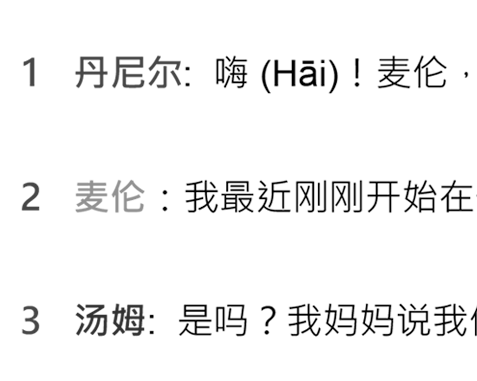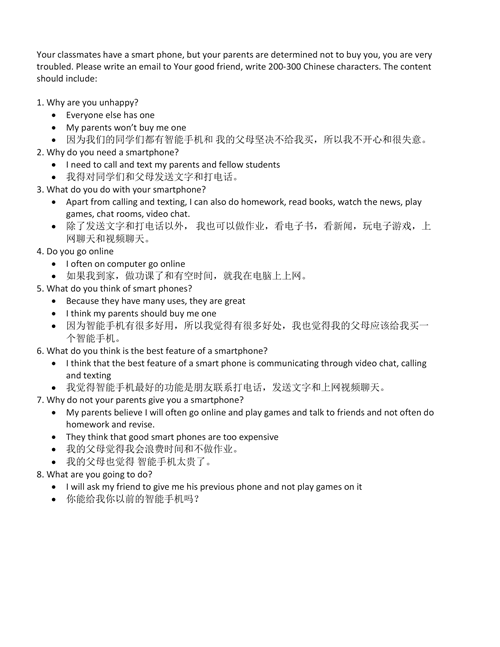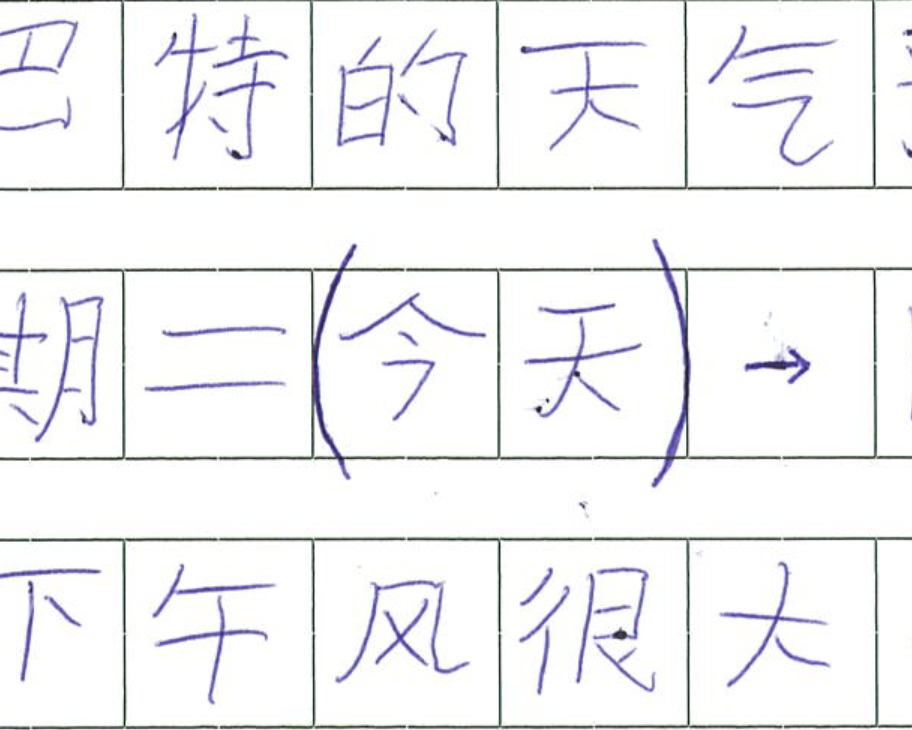Languages: Chinese - Satisfactory - Years 9 and 10 (Year 7 entry)
Portfolio summary
This portfolio of student work shows that the student can use spoken and written Chinese to initiate and sustain interactions in familiar and unfamiliar contexts (WS1, WS2, WS5, WS7). The student exchanges information (WS4), ideas and opinions (WS3) and enquires into the experiences and opinions of others, using question words to elicit more information (WS1, WS2, WS5, WS7). The student summarises and collates information from different sources and perspectives to compare how ideas and concepts are expressed and organised in Chinese texts (WS4). The student observes how texts are created for different purposes and audiences (WS2). The student responds to narratives, identifying language features that do not translate easily between cultures, mediating these ideas and expressing insights in Chinese while adjusting language use for different audiences (WS7). The student justifies own opinions with reasons (WS1, WS2) and specific examples (WS3), using tone and rhythm (WS1) emphatically (WS5). The student responds to and creates a range of informative and imaginative texts for different purposes and audiences (WS2, WS3, WS4), including Chinese audiences, and describes adjustments made in language use for these different audiences. The student uses prepositions of time and place (WS1, WS2), and prepositions to show relationships with other people (WS3, WS5, WS7). The student makes comparisons using 比, and describes people in terms of appearance, personality and behaviours (WS1, WS2). The student uses a range of cohesive devices (WS1, WS2, WS3) with the support of models and cues (WS7). In writing, the student organises ideas (WS3) according to themes or sequences events using specific time words (WS4), temporal markers (WS1, WS2). The student also indicates changes in tense (WS4) with tense markers and uses verbs to express modality (WS4, WS5) or intention (WS7).
The student discerns differences in patterns of sound for example, ‘qing’, ‘qin’ and tone (WS5) in extended speech for different contexts and audiences (WS1, WS7). The student applies knowledge of character components (WS2, WS3, WS4) and morphemes to assist understanding of new characters and words encountered (WS6). The student analyses grammatical rules, uses language appropriate to the form of communication (WS2, WS3, WS5, WS7), and compares textual features. The student recognises the key features of grammar and sentence structure that are distinctive to Chinese (WS1, WS2, WS4, WS7), such as measure words (WS3), and varied uses of verbs and applies them in new contexts (WS3, WS5). The student is aware of issues relating to translating between Chinese and English (WS6) and recognises that certain concepts cannot be translated readily. The student is aware that language use varies according to context, purpose and mode (WS6, WS7). The student explains how culture and language shape their own and others’ communication practices, and reflects on how own cultural experience (WS2) impacts on interactions with Chinese speakers (WS6).






